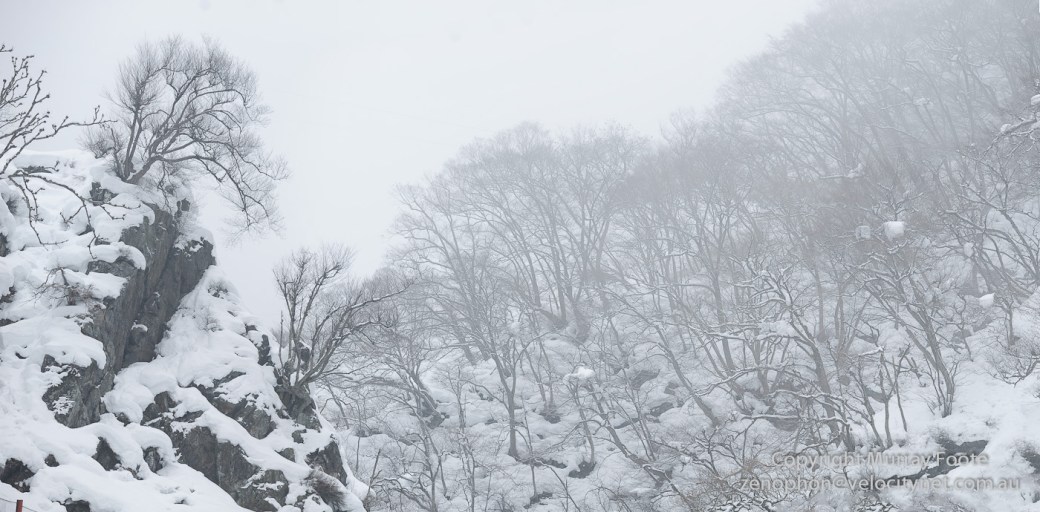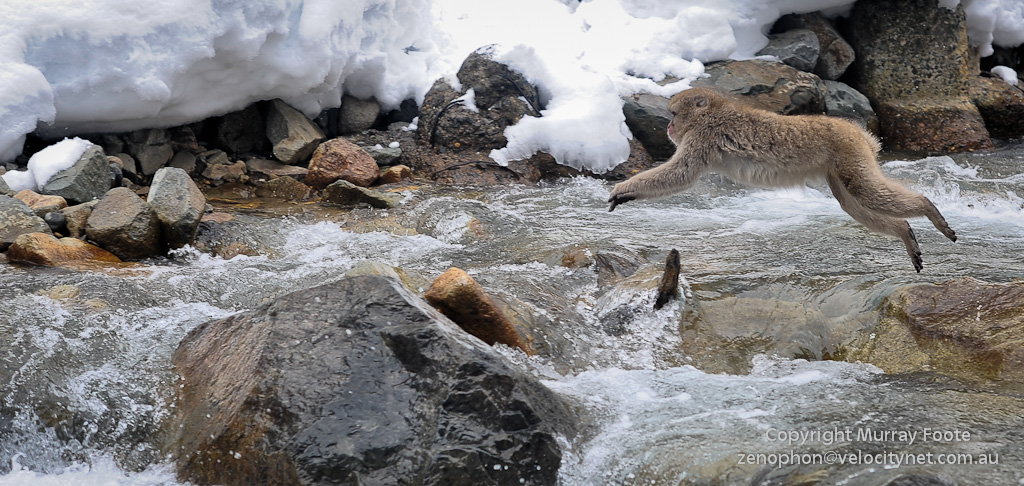Back again at the Jigokudani Monkey Park, the top shot show the trees in front of the Jigokudani Ryokan and the next one, a vehicle parked nearby at the side of the trail. That vehicle wasn’t going anywhere in a hurry.
The monkeys have a river to cross and the way they manage this is by jumping from rock to rock.

Click on any image to see it in a larger size. If you click on this image, you see it in a larger size than most.
I think most of the others in the group were photographing the macaques in the pool at this time but I was transfixed by the mystical landscape as the snow and fog rolled in.
It just goes to show that fine weather is not always the best.
Unsurprisingly, Japanese macaques climb trees. They commonly sleep in trees. In part in winter this is to avoid small avalanches that might fall out of the trees while they are asleep. It is probably also for protection from predators. They would be safe from wild dogs while mountain hawk eagles are diurnal so wouldn’t attack them at night. If raccoon dogs are also their predators, they might not be entirely safe from them because although they are a dog (and not a raccoon), they have long claws and can climb trees.
An unexpected visitor turned up. It was quite a distance away on the hill and all images were taken at the full-frame equivalent of 450mm and cropped in quite considerably.
It is a Japanese serow and the Japanese call it a Nihon kamoshika. It is said to be a goat-antelope but this is a vague and misleading term so I’ll explain further using Latin names. It is a member of the family bovidai which includes cattle, sheep, goats and antelopes. Antelope, though, is more a residual term than an accurate description.
The serow is in a sub-family called caprinae which includes goats but not antelopes. The serow, therefore, is closer to a goat than an antelope. The caprinae range from solitary animals defending a small range such as serow to herd animals such as sheep and goats. The serow is little changed since the Miocene about 5 to 7 million years ago. Apart from another Asian animal called the goral, its closest relatives are the chamois from Europe and mountain goats from America.
In this image you can most clearly see the preorbital glands below the eye. From these they secrete a scent similar to acetic acid or vinegar to mark their territory.
There are around 100,00 serow in Japan. They live for about 10 years in captivity but it is not known for how long in the wild.

















Pingback: 14th February: Nagano – Snow monkeys (Day 2) | Murray Foote
Pingback: Itinerary of Journey to Japan | Murray Foote